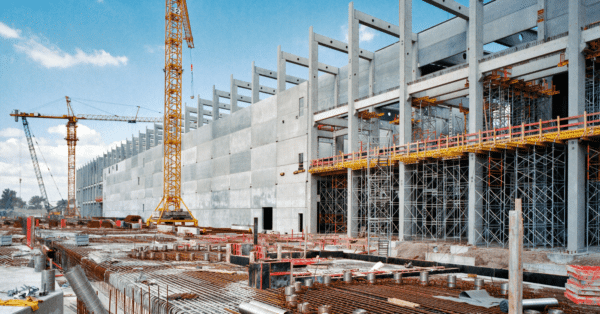During the heart of the recession, our firm prepared an economic analysis that was designed to determine how each of the states would recover from the downturn. Our analysis was based principally on population movement and basic jobs. Basic jobs are those in the industries that drive the economy. In San Diego, for instance, the military, tourism, bio-sciences and high-tech are economic drivers. All the other jobs are support jobs that materialize from the dollars generated by the basic jobs. For the most part, construction jobs are support jobs and are dominated by the residential sector. Typically, for every basic job, there are two support jobs.
The analysis divided the states into two types: systemic and cyclical. The systemic states had something wrong with their system. Typically, they were one-industry states where the one industry was flailing or failing and, as a result, the employable work force was leaving town.
The cyclical states were those that typically had ups and downs, but also had industries that are on the cutting edge or in long-term growth mode.
It took several years in order to determine if our analysis was accurate. The conclusion: It was. As we look at where the economic action and population growth is spearheading a return to economic vitality, it is those states that are cyclical. After all, Arizona and Nevada were almost written off as dead, and sure enough, they have bounced back dramatically, as has our beloved state of California.
Since the turnaround started in 2009, California has gained more than 900,000 jobs and has seen its unemployment rate cascade from 12.4% to 8.7 %. Its population has continued its upward path, with gains since 2009 of more than 700,000
In Xpera Group’s home county of San Diego, since 2009, employment is up more than 60,000 and unemployment is down from 10.2% to 7.8%. Job gains continue at an annualized pace of more than 20,000. Leading the pack are professional services of all types.
Housing is another story. San Diego County has lost 30,000 construction jobs since the peak in 2005. The reasons are simple: The County ran out of developable lots in 2006-2007 and the economy faltered. Ordinarily, recessionary times provide a period where equity funds can replenish the lot supply in anticipation of the next boom. This time it didn’t happen, because Wall Street collapsed and equity funds disappeared. The result is that there has been virtually no new subdivision development in six or seven years. Worse yet, the next wave of San Diego coastal developable land for rationally priced houses won’t be available until 2015. At that point, it will have been almost a decade since we were able to deliver residential product.
Simple economics tells us that San Diego County should be producing more than 10,000 housing units annually (both sale and rental). Since 2007, the average production has been about half that figure. Most of the sale product being delivered is in north San Diego County and those homes typically have prices north of $750,000.
The paucity of new product has caused a mad rush toward resale housing. I won’t bore you with the facts because you read them every day, but it is important to note that foreclosures have basically disappeared from the scene, that multiple offers are now commonplace and those prices are on the rise.
Now, let’s look at 2014:
The job base in California and San Diego will continue to increase at a steady pace with particular strength in tourism, high-tech (bio and telecom), import/export trade and professional services. California should add more than 300,000+ jobs in 2014, with unemployment dipping to 7.5%. Now, that is nowhere near what previous recoveries have experienced, but for now, it’s pretty good (and, no, it’s not Texas).
The construction market will continue its recovery, led predominantly by multi-family rental construction near the coast. The major national apartment builders only recently discovered the California market and are trying to make up for lost time. Inevitably, the units they build are for the white collar contingency, so the traditional “B” and “C” apartment markets will see no increase in new product. They will, however, see a rise in rents.
On the sale side, wood-framed product is on a recovery path, both for sale and rental housing. Unfortunately, the great need is for lower-density, moderate priced condominium product, but not many homebuilders are willing to jump back into that marketplace with its nasty memories of construction defect lawsuits and unsold inventory. The appetite just isn’t there.
Having said that, the Canadian condo builders have no fear and will gradually begin to start the dance of the skyline cranes in markets like Seattle, San Francisco, Los Angeles and San Diego. They are convinced that by the time their product is ready for delivery in late-2016 or 2017, the market will be desperate for quality goods with high-rise views and sophistication.
And watch for the return of conversions. It’s inevitable!
On the commercial side, I do not see much activity in the private sector. There just isn’t a lot of enthusiasm for building new office or industrial space, and not much need for retail space. In the private sector, there will be substantial funds allocated for renovation or re-creation of existing projects in classy locations.
In the public sector, there will continue to be the traditional needs for new and renovated schools and hospitals as well as infrastructure. Military construction will ebb. But overall, publicly funded projects will just limp along.
On balance, 2014 is going to be a pretty good year for California and even some of its inland counties. The key to economic health will continue to be (1) a burgeoning population, (2) job gains in the industries with long-term growth characteristics, and (3) the return of homebuilders.
My tea leaves smell good. They have the sweet smell of success.







